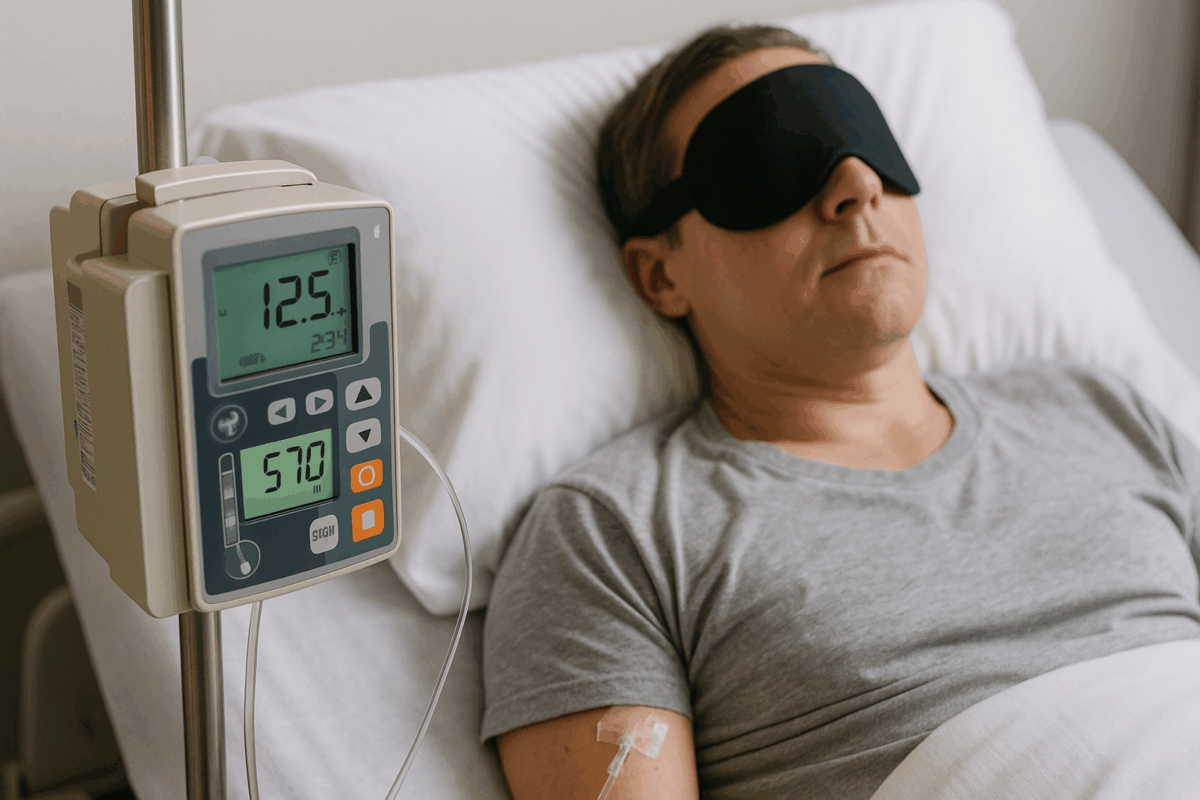In this three-part series with Unlimited Sciences, we sit down with Daniel McQueen, founder of the Center for Medicinal Mindfulness, Colorado’s DMTx program, and author to explore DMTx, an extended-state approach to working with DMT. In Part 1, Daniel explains what DMTx is, how it differs from smoking DMT or drinking ayahuasca, and why this technology may transform psychedelic exploration.

In this three-part series with Unlimited Sciences, we sit down with Daniel McQueen, founder of the Center for Medicinal Mindfulness, Colorado’s DMTx program, and author to explore DMTx, an extended-state approach to working with DMT. In Part 1, Daniel explains what DMTx is, how it differs from smoking DMT or drinking ayahuasca, and why this technology may transform psychedelic exploration.
Watch the full interview on YouTube or at the bottom of this page.
Extended-State DMT (DMTx) has long been a dream of researchers and psychonauts alike. Rick Strassman, who conducted groundbreaking DMT studies in the 1990s, once suggested that continuous infusion might allow people to remain in these states long enough to map their landscapes. In 2016, Strassman and Andrew Gallimore published a model for sustaining DMT infusions over hours. Now, with McQueen’s team in Colorado pioneering applied practice, those ideas are taking shape outside the laboratory.
The future of psychedelic exploration may not be about how far we can blast off, but how steadily we can travel, how safely we can return, and how meaningfully we can integrate what we learn along the way.
Daniel McQueen:
“DMTx is the use of medical technology to create a continuous infusion of DMT into the body. We do this through an IV connected to an infusion pump, the same kind of pump hospitals use for things like ketamine therapy, anesthesia, or chemotherapy. It’s a way to deliver small amounts of medicine steadily over time.
When you smoke or vape DMT, you’re shot into the cosmos in a minute. It’s startling, sometimes overwhelming. With DMTx, we can titrate people into the experience, starting slow, raising the infusion rate gradually, and stabilizing at whatever level feels right. Instead of a rocket ship launch and a hard crash, it’s more like a space plane, you take off, climb steadily, and can hover as long as you want.”
Daniel:
“Ayahuasca is going through your digestive system, so the effects are wavy, up and down, unpredictable. It can also induce a lot of nausea and physical discomfort, which is part of that ceremonial tradition. With DMTx, there’s no purge. It’s smooth and stable.
On a chemical level, the blood concentration of DMT during a DMTx infusion can be about five times higher than in an ayahuasca journey. So you’re looking at something both more stable and more potent, while still being controllable. If the experience ever feels too intense, we can dial it back. If someone needs a break, we can even pause the infusion. Within a minute or two, they’re grounded and sober enough to walk around, and then they can return to the journey when ready.”
Daniel:
“It changes everything. With most psychedelics, you’re committed until it wears off. With DMTx, you’re not locked in. You can step out to use the restroom, or if something feels overwhelming, you can stop, breathe, and return when you’re ready.
For some, that makes the whole idea of exploring these states feel much safer. It also allows for deeper work. People can push into new territory, knowing they can retreat and re-enter. That kind of flexibility hasn’t existed before in psychedelic medicine.”
Daniel:
“Our first sessions followed the research model, 30 minutes. Then we extended it to an hour. When we invited community psychonauts to apply, we offered up to two hours. Some people felt complete after one hour. Others could have gone four.
Personally, my longest journey was three hours. The first 45 minutes were intensely visual. Then I turned the infusion down for a reset, and when I went back up, it wasn’t visual anymore, it was more of an awakened state. I had full access to my subconscious, very little defense mechanisms, and deep self-compassion. That’s why I say DMTx is different. It’s not just longer DMT. It becomes something else.”
Daniel:
“Traditional DMT experiences are powerful but often overwhelming. People go up like a rocket, see indescribable things, and crash back to Earth. It can be beautiful, but it’s hard to integrate.
With extended DMT, we can stabilize the experience. We can meet the space slowly, intentionally, and safely. That opens possibilities for creativity, trauma healing, and even collective problem-solving. It’s also an ethical shift. Psychedelic work shouldn’t just be about intensity, it should be about safety, consent, and integration. DMTx offers a model for that.”
DMTx is one of the most significant innovations in modern psychedelic exploration. By blending infusion technology with intentional practice, it transforms DMT from a rocket-ship sprint into a space-plane journey. It is stable, adaptable, and filled with new possibilities.
If you’re looking for personalized guidance and support before or after a psychedelic experience, the Unlimited Sciences Psychedelic Info Line offers free, 1:1 support for answering questions about psychedelic safety, integration and emotional processing. We’re an evidence-based, non-judgemental space to get the answers you’re looking for.
No comment yet.
Join our email list and get immediate access to part one of our psilocybin guide. You’ll also get the latest in how we’re bridging the gap between science and soul: psychedelic research updates, real-world findings, community-driven education, personal stories and expert insights on natural medicine.
Advancing Real-World Psychedelic Research and Science-Backed Education
Unlimited Sciences is provided a nonprofit status by fiscal sponsorship through Realm of Caring Foundation.
Federal EIN: 46-3371348.
© 2025 Unlimited Sciences. All Rights Reserved.
Designed by Gloss